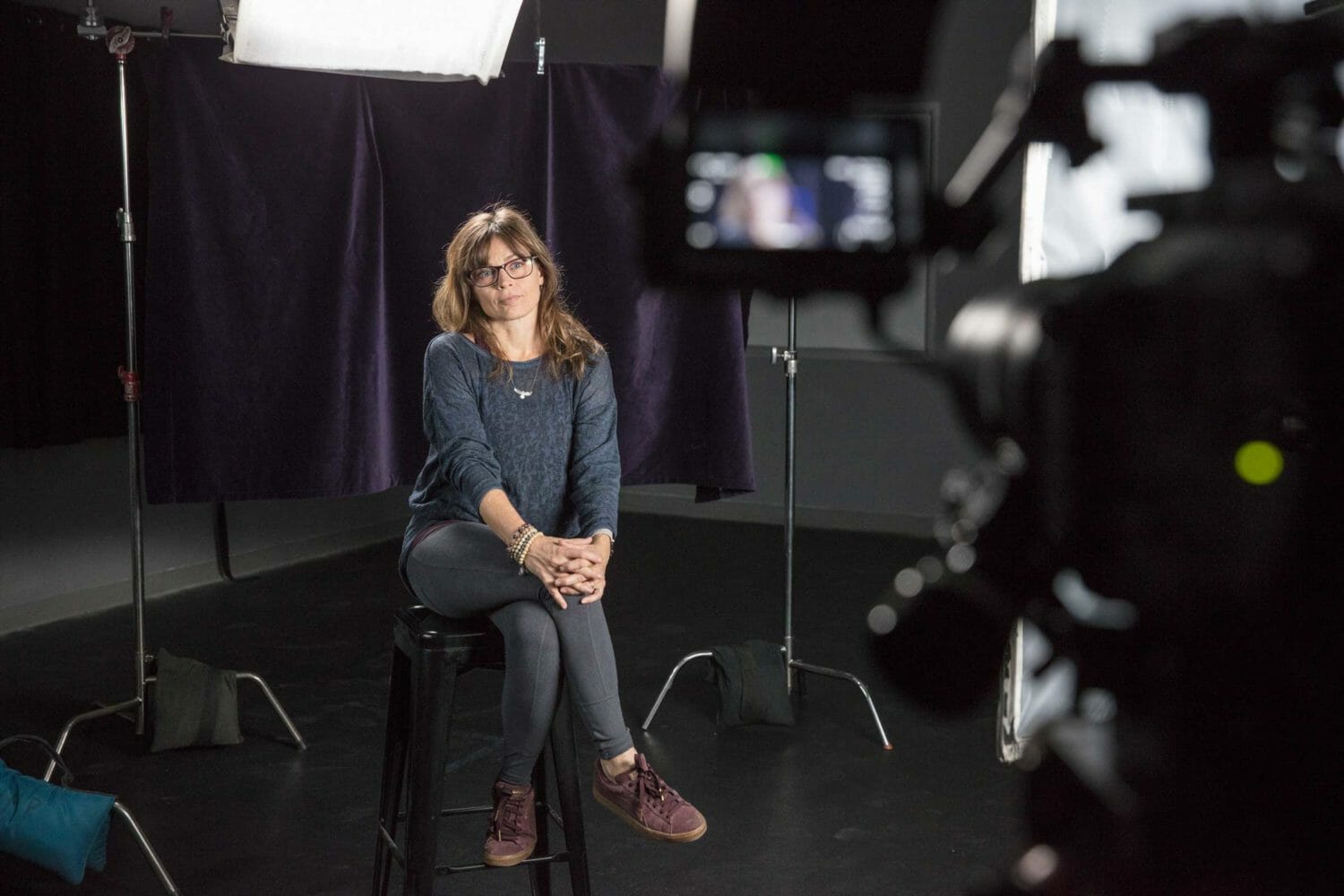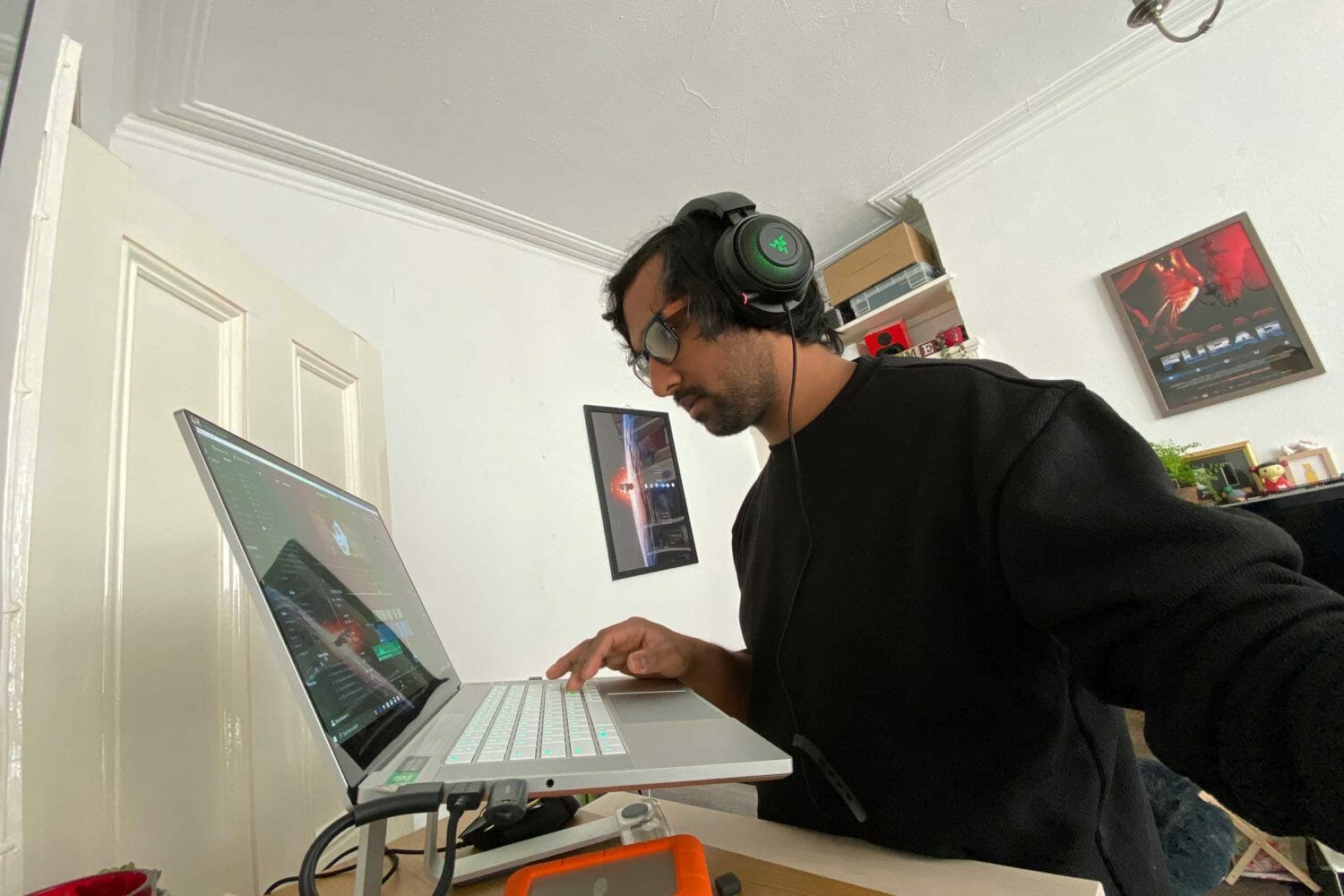How To Execute Video Production And Social Distance
As film and TV production tentatively resumes it’s clear that things will never revert to the way they were before Covid-19. Production is being permitted to start up in countries across the world provided social distancing and sanitization measures are adhered to. It’s to be hoped that these will reduce and fade over time, particularly if a vaccine is developed, but the industry’s enforced experiment in remote production coupled with the scarring financial cost of lockdown will mean permanent changes to workflow and best practice – not all of them onerous or negative.
Here’s a guide to what we know in the immediate and some best-guess ideas of mid to long term change.
Safety First Guidelines
The industry has been forced to innovate and shown it is possible to create new drama even under the most restrictive conditions.
ITV Studios – the production wing of UK commercial broadcaster ITV – conceived, shot and aired four 15-minute original dramas in just weeks. Featuring actors the caliber of Eddie Marsan (Vice) each Isolation Stories https://www.ibc.org/create-and-produce/behind-the-scenes-isolation-stories/5911.articledrama was shot inside the actor’s homes on Samsung smartphones with lighting, camera position, set dressing and make-up duties performed by their families. Instructions on direction and cinematography were relayed by Zoom with rushes uploaded to Google drive.
Every state and country is on a different track to lifting lock-down with differing restrictions and within that there every production will have to find hygiene and social distance rules that fit its circumstance.
Broadly, though the guidelines for shooting in the immediate living-with-COVID-19 period are similar. Crew members will have to wear masks, actors will have to social distance from the crew, catering will be pre-packed. There are also rules on the number of people allowed on set – depending on the nature of the production. Clusters of crew are discouraged.
The Association of Independent Commercial Producers has released extensive (but by no means final) guidelines https://www.aicp.com/business-resources/business-affairs-information/aicp-guidlines/covid-19-workplace-guidelines/ for the restart of commercial productions. They make a pretty good template for any other type of show.
While not mandatory, they need consideration in light of state/government employment law. They will also need constantly revising as new information emerges. Items will be added, removed and reconfigured as we get back to work and learn from experience.
It notes that obtaining permits for on-location filming in homes and businesses might prove particularly difficult. ‘Neighbors or neighborhoods may have a diminished appetite for the presence of film crews. Acquiring signatures will be difficult logistically. Fewer people will be eager to provide signatures for filming activity on their street.’
The production-specific guidelines include recommendations on casting, talent, wardrobe, hair and makeup, video village, camera and sound, transportation and the handling of equipment. The post production-specific guidelines address such areas of concern as supervised sessions, studio procedures, client requirements and social distancing.
It asks productions to consider a temporary barrier between actors while establishing marks and positions. Alternate shot set-ups, camera angles, and lenses should be considered to allow for maximum separation (depth of field can simulate greater proximity). Its list is as detailed as suggesting a separate pen for each acting extra to keep while completing paperwork (or do it digitally).
If the actor can’t show up having done their own hair or make-up, then the Hair or Make-Up artist should wear appropriate PPE and use single-use brushes and applicators if proper disinfectant cannot be guaranteed (increasing environmental impact in the process).
Props could be simulated by using an actor’s own possessions (such as a phone); similarly, wardrobe specifications could be altered to use more of the actor’s personal clothes.
Stagger scheduling
Scheduling should be altered to stagger call times and work day start and end times should avoid rush hour commutes. Question whether prep, pre-light, or strike days will be required. It’s desirable that the same staff/freelancers stay with production for its duration (as opposed to individuals swapping in and out), to minimize the amount of interpersonal contact.
Alternative lodging may need providing to house talent and crew for the entire duration of the shoot to avoid them returning home. This could even involve two-week quarantine of actors/crew ahead of restarting shooting. This is doubly important for shoots at a multi-stage facility where other productions may be taking place.
Handling of camera equipment should only be done by members of the camera department. Audio kits such as Comteks and Lav mics should be disinfected before and after each use. Perhaps boom-only audio (as opposed to rigging Lav mics) is a more appropriate safety-first option.
Quarantine supervisor
To coordinate all of this, the new position of ‘quarantine supervisor’ or similar point of contact should be designated. They will each be responsible for supervising and enforcing social distance rules and hygiene protocols, checking in with each crew member, perhaps even checking their temperatures.
Australian soap opera Neighbours is already back in production with measures including replacement of background extras with crew members – something that has already got SAG warning against similar happening here.
The soap’s studio is split into quadrants with no more than 100 people a day in any area. Fremantle Australia chief executive Chris Oliver-Taylor told the BBC https://www.bbc.co.uk/news/entertainment-arts-52355045 “We’re going to assume if someone does get sick we don’t need to shut the entire shoot – we just close that group and carry on.”

The Bigger Picture
Away from the day to day of production during quarantine, there will be more substantive changes.
Insurance
Insurance will be playing on the minds of many producers. The French government has launched a state-backed fund for productions that are unable to get insurance cover because of the pandemic and its on-going associated risks. UK producers’ guild Pact has identified this as the critical issue to be resolved as quickly as possible, because even if productions are able to go ahead within government guidelines they may still be prevented due to a lack of insurance.
Travel
Travel, and air travel in particular, remains a massive problem. Currently in the UK, where productions including The Batman remain on hold, there’s a two-week quarantine for anyone flying into the country.
It’s one reason why filming is likely to begin in local areas first, with locations adjusted to minimise travel and keep within smaller footprints. In turn this could mean more productions turning away from traditional tax credit territories like Montreal, London even Vancouver and toward the financial incentives or other perhaps more rural (less populous) states and cities.
Smaller Teams
Indeed, it is smaller, indie teams that are the key to restarting film and TV production worldwide according to a panel of locations and production experts talking to Screen Daily – https://www.screendaily.com/news/screen-talks-production-experts-talk-new-covid-19-realities-pushing-shoots-to-2021/5149810.article
‘There aren’t going to be as many people employed as previously,’ said line producer and unit production manager Sam Breckman, whose credits include Tomb Raider, Jason Bourne and The Monuments Men. ‘Maybe our industry has got too bloated. There’s a point where we’ve just got to say, ‘Sorry, you can’t have an assistant of an assistant of an assistant anymore, you’ve got one.”
Art director and prop master David Bridson, told Indiewire https://www.indiewire.com/2020/04/production-coronavirus-shut-down-restarting-1202222310/#! That one solution could be drastically reducing the number of people on set to the key people from each department, leading even big shows to go ‘documentary style.’
Remote working
The reduction in crew, even key creatives, attending set is likely to continue in place long after Covid-19 forces remote from home working. Virtual remote work is no longer a ‘love to try it someday’ scenario but one in which we all have real world experience. Executives too.
‘There will be positive consequences resulting from production lock-down,’ asserts Chuck Parker who runs private fast fiber network Sohonet. ‘Chief among these will be an enlightened attitude in Hollywood and beyond to the practicality and benefits of a distributed content-production workforce.’
Expect more production tasks to stay remote for more of the time. Casting sessions and callbacks could be done remotely (this is part of the AICP guidelines).
Line producer, production manager, buyers and post-production staff (editor, composer, sound mixer and VFX can all be done remotely without too much overhaul in current workflows or any reduction in quality.
Lightstorm, for example, was making long distance reviews of VFX during editorial between LA and Weta Digital in New Zealand for Avatar in 2008/9 and is doing the exact same for sequels 2 and 3 currently in production.
The parts of the process that technology has yet to solve are the extremely data intensive real-time color grading final reviews and sound mixing, which both require access to expensively equipped rooms and calibrated monitors.
Facilities group Light Iron points out https://www.creativeplanetnetwork.com/news/has-remote-production-changed-production-foreverthat there may be compromises during principal photography (such as shorter work days, fewer personnel to equip proper lighting) which will require productions budget additional time in post to fix issues.

Virtual production
If under current circumstances it is easier to green-lit a pared down contemporary drama (like Locke which effectively dramatized actor Tom Hardy in a car) than giant cast, multi-location epics like The Irishman, we may see studios and streamers commission more animated shows which are pretty immune to impact.
Into that bracket comes virtual productions like The Lion King with little or no live action element. Other shows, like Avatar which are hybrid animation/live action can capture performances separately and integrate the data virtually and in real time using games rendering engines.
What is interesting is that this cutting-edge type of production need not cost millions of dollars. Indeed, British filmmaker Hasraf HaZ Dulull remote produced animated sci-fi short Battlesuit in London with just two other crew during lock-down. He built and animated the graphics in Unreal Engine, composed shots with the DragonFly plugin from Glassbox Technologies, processed it all on a Nvidia GPU powered laptop and shared assets on Dropbox, Vimeo Pro and Trello.
‘Indie filmmakers can use the same tools as the makers of Marvel and you can do it in your own home,’ he says. ‘Tools like these reflect the exciting revolution of real-time filmmaking that we are all currently venturing into – where indie filmmakers with small teams can realize their ideas and cinematic dreams without the need for huge studio space or large teams to set up and operate.’


